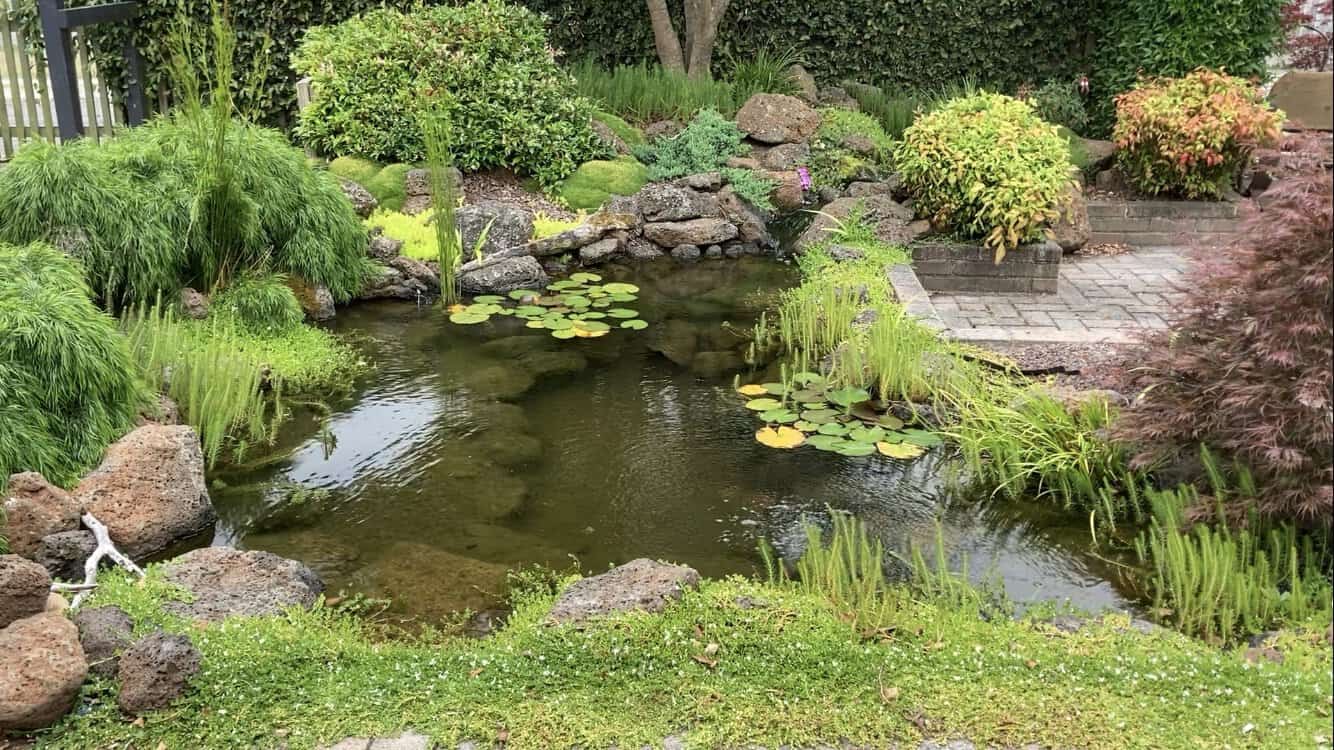Today I’m excited to share with you how to create a DIY pond skimmer. Many of you have asked for more information on the DIY bucket skimmer I use in my courtyard pond, so in this post, I’ll explain how it works and how you can build one yourself.
How a Skimmer Works
A pond skimmer functions by creating tension or a pull on the water’s surface, essentially acting as an automatic sweeper for your pond. This tension helps to keep the surface clear of debris. As you can see in the video below, my pond has very little surface debris, thanks to the skimmer. Anything that falls onto the surface is swept into the bucket which houses the submersible pond pump.
Materials Needed
- A sturdy bucket
- Drill
- Pump
- Two large rocks
- Waterfall foam
- Pond liner
- Heavy-duty filter sponge
Helpful links to pond liner, efficient submersible pumps and filter sponges can be found on my helpful products page.
Step-by-Step Guide to Creating Your DIY Skimmer
- Prepare the Bucket:
- Start with a cheap but sturdy bucket.
- Drill several holes into the bucket. These holes are crucial because if the water level drops below the bucket’s lip, the pump will not run dry and get damaged.
- You might like to fill the holes with some off-cuts of the filter sponge to prevent debris entering the bucket below the main sponge.
- Placement:
- Dig a small depression on the top shelf of your pond where the bucket will sit.
- Place the pump inside the bucket. This ensures that all the water moving through the pump will pass through the bucket.
- Connecting to the Filter:
- Connect the pump to your pond’s filter system. In my case, the pump sends water to a bog filter, which then returns the water to the pond on the opposite side of the skimmer.
- Creating the Skimmer Entrance:
- Position two large rocks on either side of the skimmer entrance to funnel the water into a narrow gap.
- Seal the gaps between the rocks and the pond liner with waterfall foam to ensure a tight fit.
- Adding Surface Tension:
- To enhance the surface tension, add a flap of pond liner and tuck it under a few small rocks. This flap works similarly to the weir in a professional skimmer, providing flexibility in water level without affecting the skimming action.
Visualizing the Setup
Here’s a rough sketch of the side-on look of the setup:
- The bucket is recessed into the top shelf.
- Two large rocks create a narrow opening from the pond into the skimmer.
- The flap of pond liner between the rocks is optional. It can help set the optimal water level through the narrow opening. This helps create the necessary surface tension, pulling debris into the bucket.



Maintenance Tips
- Add a heavy-duty filter sponge over the pump to make cleaning easier and to prevent small fish from being sucked into the pump.
- Rinse the sponge and remove any trapped debris from the bucket once a week. I’m lazy and I often go months without cleaning the sponge.
Adjusting the Gap Size
The size of the gap between the rocks depends on the amount of water your pump moves. I recommend using trial and error to find the right size. I measured the pipework size recommended for my pump and made the gap twice that size, which worked well for me.
The liner flap isn’t critical, but it can be useful at getting a really thin layer of water passing over the narrow opening, this greatly increases the skimmers efficiency.
Final Thoughts
Building your own bucket skimmer is straightforward and cost-effective. If you liked this article, you might also like one I wrote on building an intake bay. A Intake bay is a supersized skimmer and requires even less maintenance.
And if you like the idea of low maintenance ponds, you might like my handy downloadable pdf that contains all the formulas I use when building my ponds.
Anyway I hope this was helpful. See ya!

